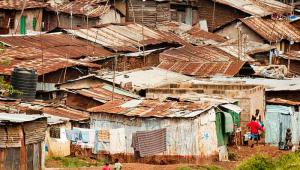It has proposed to introduce the first Poverty Reduction Act in Canada’s history, which would also see the rate of poverty in the country reduce by 20% by 2020.
The strategy, released by the government earlier this week, called Opportunity for All, also set out its definition of ‘poverty’ in the document and what the ‘poverty line’ - the minimum level of income considered to be adequate - will be.
If the strategy is successful, this would mean Canada would have the lowest poverty rate in its history, the government said.
John McArthur, senior fellow in global economy and development at the Brookings Institute, told PF International that the strategy marked “two major steps forward”.
“First, the new official poverty line will help focus everyone’s attention on how the country is doing.
“Second, the targets for 2020 and 2030 provide a clear definition of success, explicitly aligned with the standards all countries set for themselves in the Sustainable Development Goals,” he said.
He added that the federal elections, which will take place on 21 October next year, will be “a perfect moment” for politicians and analysts to debate how to meet the targets set out in the plan.
The government has not yet announced any new funding to meet its goals or explained how it will meet the targets.
McArthur said: “In my own view it’s not necessarily a bad thing to separate the ‘what’ discussion [defining the problem we’re trying to solve] from the ‘how’ discussion [describing targeted strategies and investments to solve the problem].
“If all parties endorse the ‘what’ target then that creates a tremendous, positive space for ‘how’ debates.”
The strategy calls for collaboration across local governments to ensure the success of the strategy.
McArthur also said: “Canadians will now have a clear standard for holding leaders accountable over time.”
The poverty line will be based on the “cost of a basket of goods and services” that individuals and families require to meet their basic needs and achieve a “modest standard of living”, the government said.
It defines poverty as “the condition of a person who is deprived of the resources, means, choices and power necessary to acquire and maintain a basic level of living standards and to facilitate integration and participation in society”.
Minister of families, children and social development Jean-Yves Duclos said that “Canada's first-ever poverty reduction strategy is built on the belief that all Canadians deserve to be treated fairly” and “should have a sense of security and be hopeful that tomorrow will be better than today for them”.
At the G7 meeting earlier this year, prime minister Justin Trudeau stressed: “We [the Canadian government] need to ensure that growth works for everyone, so that all can benefit from their hard work, and so that all are able to enjoy a higher quality of life”.
In 2015, 4.2 million Canadians were living in poverty, representing roughly one in eight. By 2016 the number dropped to 3.7 million Canadians.
Since 2015, the government has invested CA$22bn to reduce poverty and expects 650,000 Canadians will have been lifted out of poverty by 2019.







